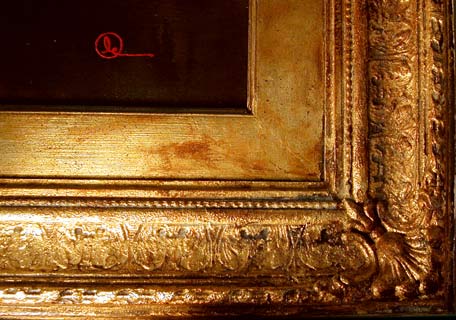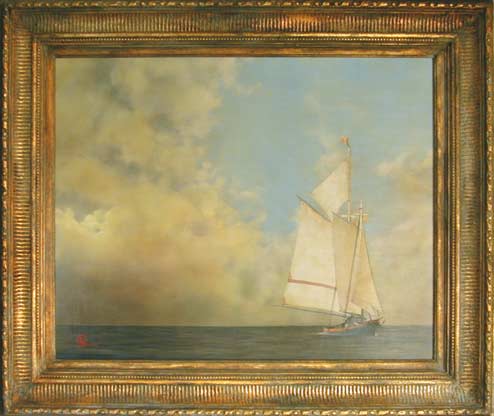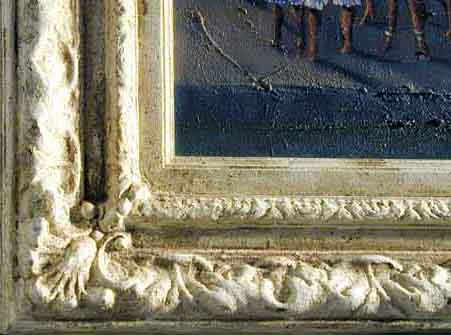Some Technical Considerations
In Framing Fine Art Prints
 |
 |
 |
Technical considerations, as the phrase is used here, applies to preserving the artwork itself. For example, protecting a lithograph from damage involves such problem causes as the acid content of paper and other materials, humidity, vermin, sunlight, etc.
The objectives of a print collector are important factors in determining what precautions should be taken to protect the print itself. On the one hand, a print insulated from as many hazards as possible may be safe for future generations, tucked away in a vault. This is a reasonable thing to do if protecting one’s investment is the over-arching goal. If, however, displaying the print is important to the collector, some balance must be achieved between absolute preservation and display.
You may wish to contact art museums or university libraries to which you have access. If you consult a framer, you may want to ask the framer whether he can provide a "museum mount" for your fine art print. The following kind of criteria can help you determine whether a particular framer can actually do so. The list of questions on this page is neither conclusive nor exhaustive; however, it may be useful.
The Storybook Home also features a series of short articles on various aspects of framing. Each of the following links takes you to the issue’s summary page, containing a brief description of each article:
- How to Frame Prints, Part 1 January-February 2002
- How to Frame Prints, Part 2 March-April 2002
Questions About Framing Lithographs
The importance of having as acid-free an environment as possible perhaps needs no explanation.Q. Will the print be displayed in a floating mat?
An important reason for displaying a print in a floating mat is that the entire piece of paper on which the image appears is likely to remain the same. For example, if a print is subjected to conditions that discolor the paper, a floating mat can tend to subject the entire piece of paper to the same conditions. A work-on-paper that is placed behind a mat tends to subject only the exposed part of the paper to discoloration.Q. Will rice-paper hinges and a neutral-pH paste (or similarly archival quality materials and techniques) be used to attach the print to the backing?
Hinges are a traditional means of attaching fine art prints for display within a floating mat. A floating mat usually consists of at least a back (to which the print is attached by means of hinges), and a surrounding mat that keeps the glass away from the surface of the print.Q. Will the print come in contact with the glass in the frame?
The correct answer is "No."Q. What kind of glass will be used in the frame?
Ink characteristics are an important factor in determining its resistance to deterioration caused by such things as exposure to sunlight. Various kinds of glass are available as precautionary measures. Consequently, where a framed print will be displayed becomes a factor.Q. Will the frame be backed with a dust barrier?
Precautions should be taken to protect the print from dust. Accordingly, a quality frame job provides a dust barrier on the back. Another consideration might also be the thickness and strength of the material used as the backing for the frame. For example, the backing material should provide reasonable protection against damage from a puncture.
Additional Sources
Cunning, Robert
The Encyclopedia of Picture Framing Techniques
Running Press: Philadelphia, 1993
ISBN 1-56138-208-6